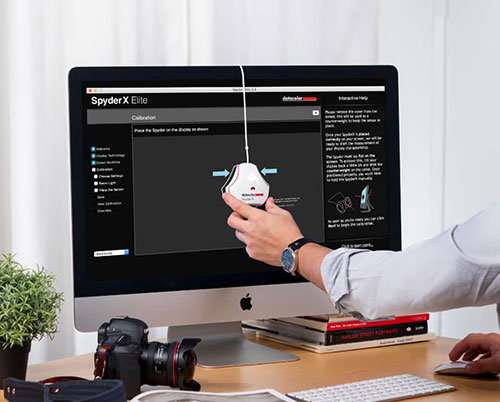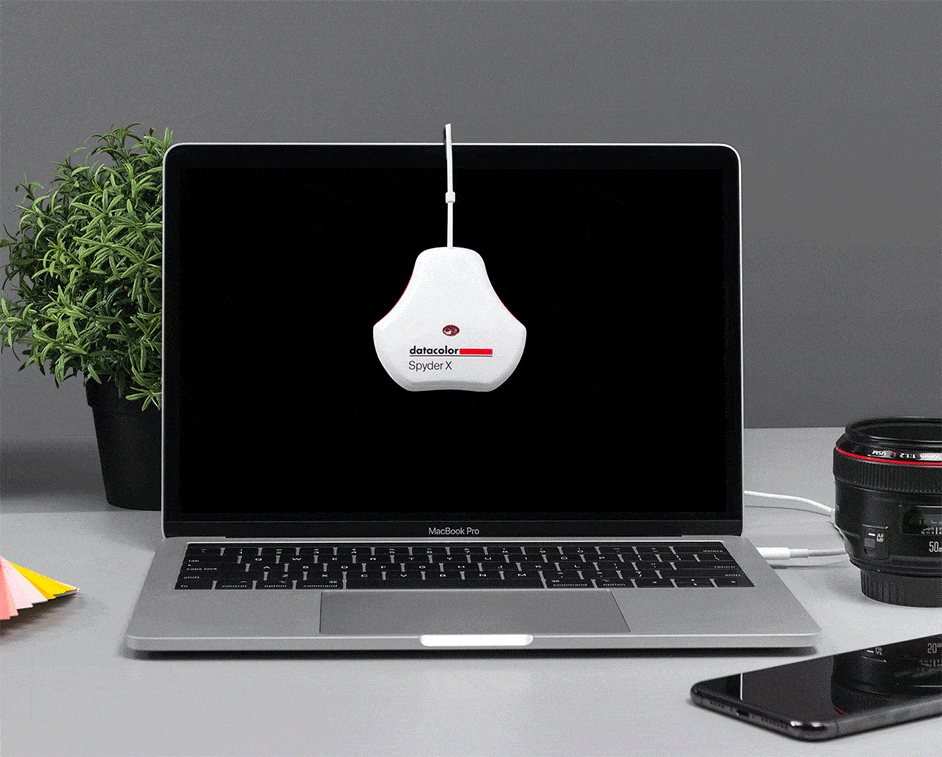
Datacolor's SpyderX lets you tweak your monitor at homeBy Jim Bray Want to make sure your video monitor is displaying as it should? If so, you might be interested in Datacolor's SpyderX, a nifty tool by which you can optimize your display easily and quickly. And it seems to work, though I'm no expert on such topics. But after having tried the Spyder X on my computer and even one of my flat panel 4K TV's, I'm confident to say the product does work well. Why would you care? Well, there's the pursuit of excellence, of getting the most out of the after-tax disposable income you've spent on your technology. And there's also accuracy, if you're a professional designer who uses colour in your work – if you specify a particular colour (Pantone colour standards etc., notwithstanding), you should do everything you can to ensure that what you see on your screen is exactly what you intended. Remember WYSIWGY? It reminds me of the old (well, there are still vestiges) THX certification system for movie and, later, home theatres. THX was originally more for the audio side of things, and it seems to have done a lot to help improve your experience at home or in the theatre (well, the ones that paid the fee, anyway…). Which brings us back to Datacolor and its SpyderX which, according to an email I received from their PR guy, "is the easiest, most accurate, and fastest calibration tool Datacolor has ever released. This new tool takes just 2-3 minutes to calibrate, in comparison to its predecessor, the Spyder 5 which averaged around 8-10 minutes." Well, brevity is the soul of wit, some wag named Shakespeare once wrote – which means I'm probably already limiting the impact of this piece by continuing to pontificate. But having sat through the calibration process I appreciate only waiting a couple of minutes (I didn't actually time the process) rather than hanging around waiting for it to deign to finish. This was especially handy when I used the Spyder X to calibrate my 55 inch Panasonic 4K "LED" TV because the short length of the Spyder's cable coupled with the mounting of the TV meant I had to hold the unit in place on the screen physically, so my old bones found the truncated time welcome. According to the company, SpyderX features a fully redesigned colour engine that provides "significantly increased color accuracy and low light capabilities, giving photographers the confidence needed to achieve their creative vision." 
Available in two versions (they sent me the "Elite" version), the "entry level" SpyderX Pro is aimed at serious photographers and designers who want a quick and easy-to-use calibration regimen. The Elite version adds more advanced settings designed for professional photographers and videographers who "want ultimate control of their color workflow." Susan Bunting, Datacolor's director of marketing, said: "We know photography is a labor of love, and a lot goes into taking every shot. That's why we've redesigned SpyderX from the ground up, ensuring you can trust the color on your screen while making the whole process of calibration as intuitive and quick as possible." And it's very easy to use. Once you've downloaded the software, you basically fire up the app, connect the hardware thingy, and then follow its instructions – and they're very simple if you want to leave the thinking to the system itself. If you don't trust the robot, you can partake of the advanced settings, most of which were way over my head – but they're there if you want them. I first let the SpyderX work its magic on my main PC monitor, a 32-inch LG I've had for years. The software's wizards give you advice before you being (warming the monitor up for half an hour, making sure the monitor's settings are correct up front and that the room's lighting is suitable, etc.) and since I am more of an amateur hack than a real pro when it comes to stuff like this I let the robot do the thinking. Before you hang the SpyderX on your monitor, you place it on the desktop in front of it, so the system can check the ambient light in your viewing room and/or office. And the SpyderX didn't like what it found when I did that. Nope, it had the audacity to tell me that my room was far too bright. So, I took out one of the three bulbs in my ceiling-mounted light fixture and the SypderX was much happier, though not as much as I'd thought because it still thought the room was too bright. But it deigned to walk me through the process of tweaking my monitor's brightness setting until it met its parameters, and then it let me continue the calibration process. Next, you tell the software what type of monitor you're using: desktop, laptop or projector, and you can also tell it the brand and model number. Or you can use the more generic settings (I first tried the monitor on "Generic PNP" (plug-and-play) setting and it seemed to do the job just fine. I went back and used the actual model number later and it also worked fine; heck, these amateur eyes could see no difference between the calibrated "PNP" and the properly customized calibration. Your eyes' mileage, of course, may vary. But I did see a difference between "before" and "after" the calibration. Anyway, once you've done all this (which only takes a moment or two), you move on to the actual calibration, and this is where you hang the SypderX thingy off your monitor. There's a counterweight (which doubles as the cover to the sensor thingy) you put over the top of the monitor to help balance the sensor thingy at the right spot in front of the screen (the software puts a template on the screen to show you where the thingy should be), and once you activate the actual calibration process the app takes over your monitor and displays a series of coloured screens – the image going directly into the sensor thingy on the monitor and from there to the app. As mentioned, once the process is done – and it is quite quick – you can check "before" and "after" on the screen and, assuming the company's software isn't just blowing smoke (and I have no reason to think it is), I found the difference quite noticeable. The uncalibrated picture was less lifelike before the process and the calibrated picture was head and shoulders better in every way: colour, blacks, etc. I had been quite satisfied with the monitor before the calibration, but afterward I wondered how I'd ever lived with such a piece of junk. This made me want to try it on a TV, so I packed up my laptop and the SpyderX system and hightailed it to my living room. Well, wouldn't you know, the little arachnid was even more upset about the ambient lighting there than in my dingy little office! So, I followed its instructions and cranked the TV's brightness to within the Spyder's parameters and continued with the process. The system really didn't like working on the stand-mounted 55-inch TV. The USB cable that connects the unit to the PC is short, so when it came time to hang the sensor, I had to move the laptop right under the TV so there was enough cable to hang it. And for some reason, the sensor wouldn't lie flat against the TV like it did the monitor in my office, so I had to hold it there with my hand. Talk about a twisted individual! But it worked, and as with my LG monitor, the Panasonic 4K TV ended up looking better afterward than it did before. I was tempted to try it on my 75-inch Samsung QLED, but because of the cable length it wasn't practical. I could have used a USB extension cord, perhaps, but the company says the sensor should be plugged into the PC directly (no hubs, keyboards etc.), so I didn't try. It isn't that big a deal anyway when it comes to TV's, for me anyway, because I also have a couple of excellent calibration Blu-rays. It would have been interesting, however, to see how the Datacolor would work on the mighty QLED, which is one of the best TV's I've ever seen. Oh, well. Obviously, this product is aimed at photo and design professionals, not hacks and/or video snobs like me. And as such (and to my limited abilities to tell) it does appear to work as advertised, and how can one be upset by that? The SpyderX Pro sells for 229.99 CAD, according to Datacolor's SpyderX website, while the higher end Elite lists for 369.99 Canadian. Copyright 2020 Jim Bray |